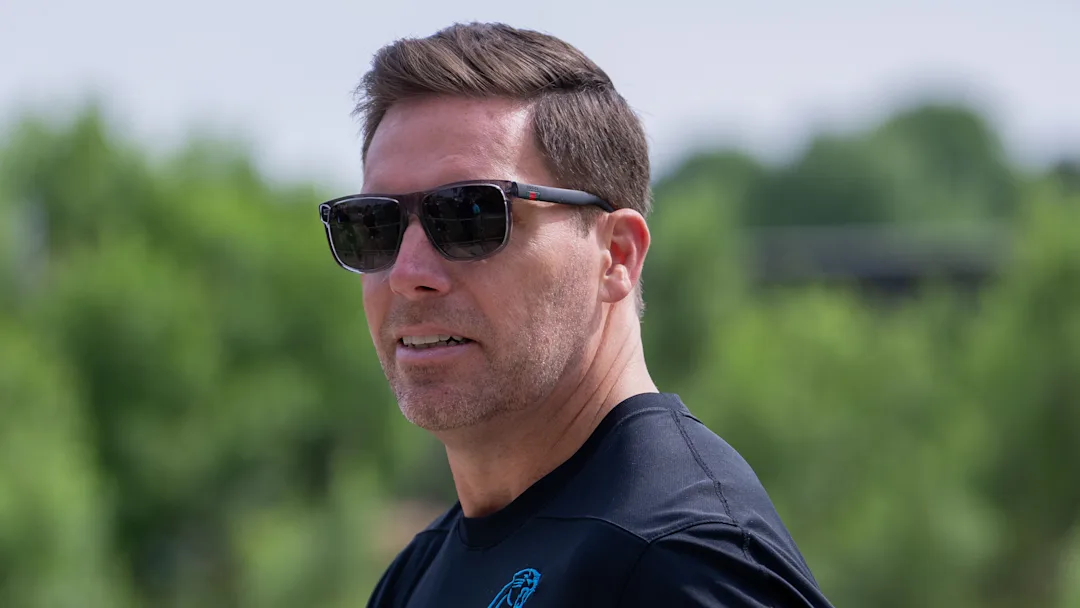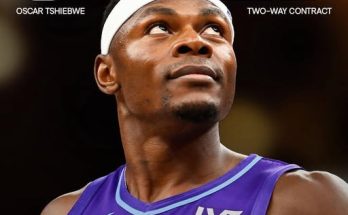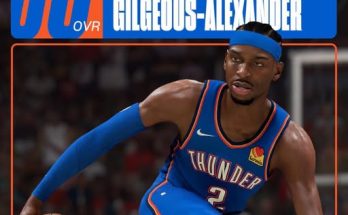The Carolina Panthers are entering the 2025 season with a clear offensive identity: establish the run and control the tempo of games. After a disappointing 2024 campaign where the offense struggled to find consistency, second-year general manager Dan Morgan made it a priority to revamp the backfield. The Panthers were overly reliant on Chuba Hubbard last season, partly due to Miles Sanders’ underwhelming performance and yet another injury setback for rookie Jonathon Brooks. Recognizing the need for depth and versatility, Morgan made several key moves this offseason, including releasing Sanders, placing Brooks on the physically unable-to-perform list, drafting Trevor Etienne in the fourth round, and signing former Dallas Cowboys running back Rico Dowdle in free agency.
The Panthers’ new head coach, Dave Canales, has made it no secret that he wants to build a physical, run-first offense. His philosophy hinges on a strong ground game to take pressure off quarterback Bryce Young, who is entering a critical third season. With Hubbard as the lead back, Dowdle as a powerful change-of-pace option, and Etienne as a pass-catching threat, the Panthers believe they have the pieces in place to sustain a balanced attack. However, not everyone is convinced this plan will unfold smoothly.
NFL writer Matthew Schmidt of Sports Illustrated recently proposed a wild yet intriguing scenario: if the Panthers struggle early and fall out of playoff contention by the trade deadline, Dowdle could become a trade chip. Schmidt’s reasoning is rooted in Dowdle’s contract situation—he signed just a one-year deal in free agency—and the potential for Carolina to recoup assets if they’re not in the postseason hunt. While this idea may seem premature, it raises interesting questions about the Panthers’ long-term backfield plans and whether Dowdle is truly a foundational piece or merely a short-term solution.
Dowdle, who spent the first four years of his career with the Cowboys, has shown flashes of potential when given opportunities. He’s a tough, physical runner with underrated receiving ability, making him a solid fit in Canales’ system. However, durability has been a concern throughout his career, and he’s never been a full-time starter. If he thrives in Carolina, he could price himself out of the Panthers’ budget next offseason. If he struggles or the team falters, trading him for draft capital could be a savvy move.
The Panthers’ backfield is far from settled. Hubbard is the presumed starter, but his workload last season (over 250 carries) was unsustainable, and the team clearly wants to avoid putting him in that position again. Brooks, a highly-touted rookie before his injury, remains a wild card. If he returns healthy later in the season, he could eat into Dowdle’s touches. Etienne, meanwhile, was drafted for his explosiveness and versatility, but rookies often take time to adjust to the NFL. If Dowdle outperforms expectations, the Panthers may want to keep him. If not, they could look to move him before he hits free agency.
Schmidt’s proposal also speaks to a larger trend in the NFL: running backs are increasingly viewed as replaceable assets. With the exception of a few elite talents, most teams are hesitant to invest heavily in the position. The Panthers, still in the early stages of their rebuild, may prefer to cycle through cost-effective options rather than commit long-term money to a veteran back. Trading Dowdle for a mid-to-late-round pick could align with that philosophy.
Of course, this scenario hinges on several factors. First, the Panthers would need to be out of playoff contention by midseason—something fans hope won’t happen but remains a possibility given the team’s youth and the competitiveness of the NFC South. Second, Dowdle would need to show enough value to attract trade interest. If he’s playing well, the Panthers may prefer to keep him rather than weaken their backfield depth. Conversely, if he’s struggling, finding a trade partner could prove difficult.
There’s also the question of whether the Panthers would even entertain the idea. Morgan and Canales have emphasized building a culture of toughness and accountability, and trading a key contributor midseason could send the wrong message. However, if the team is clearly not competing for a playoff spot, prioritizing future assets over short-term gains might make sense.
Ultimately, Schmidt’s trade proposal is speculative but not without merit. The Panthers’ backfield is crowded, and Dowdle’s contract situation makes him expendable under the right circumstances. If Carolina stumbles out of the gate, he could be a name to watch ahead of the trade deadline. For now, though, the focus remains on establishing a dominant rushing attack to support Bryce Young and take pressure off a still-developing offense.
The Panthers’ success in 2025 will depend heavily on their ability to run the ball effectively. If they do, Dowdle could be a key contributor. If not, he might find himself on the move before the season ends. Either way, Carolina’s backfield decisions will be a storyline worth monitoring as the year unfolds.



